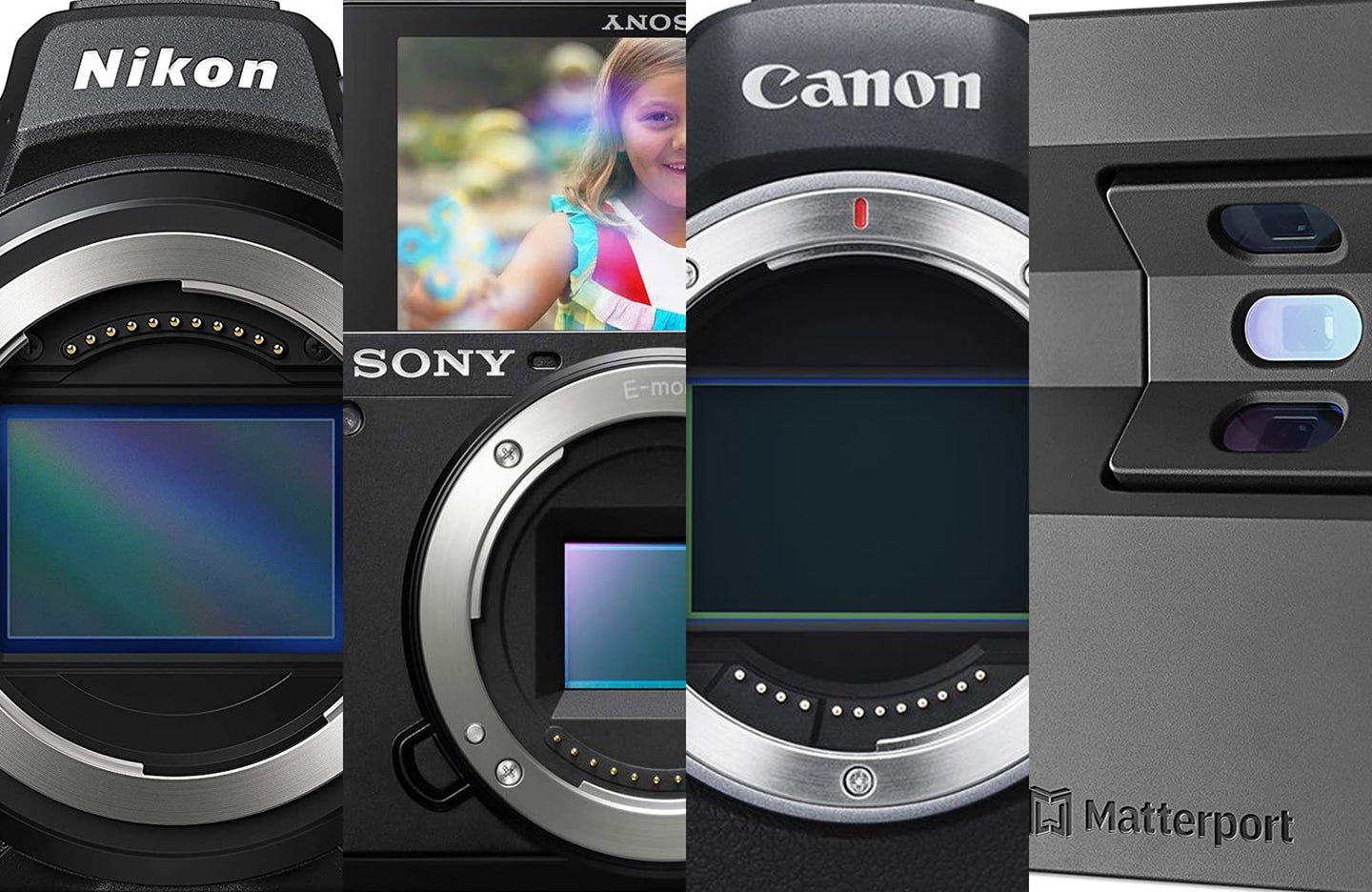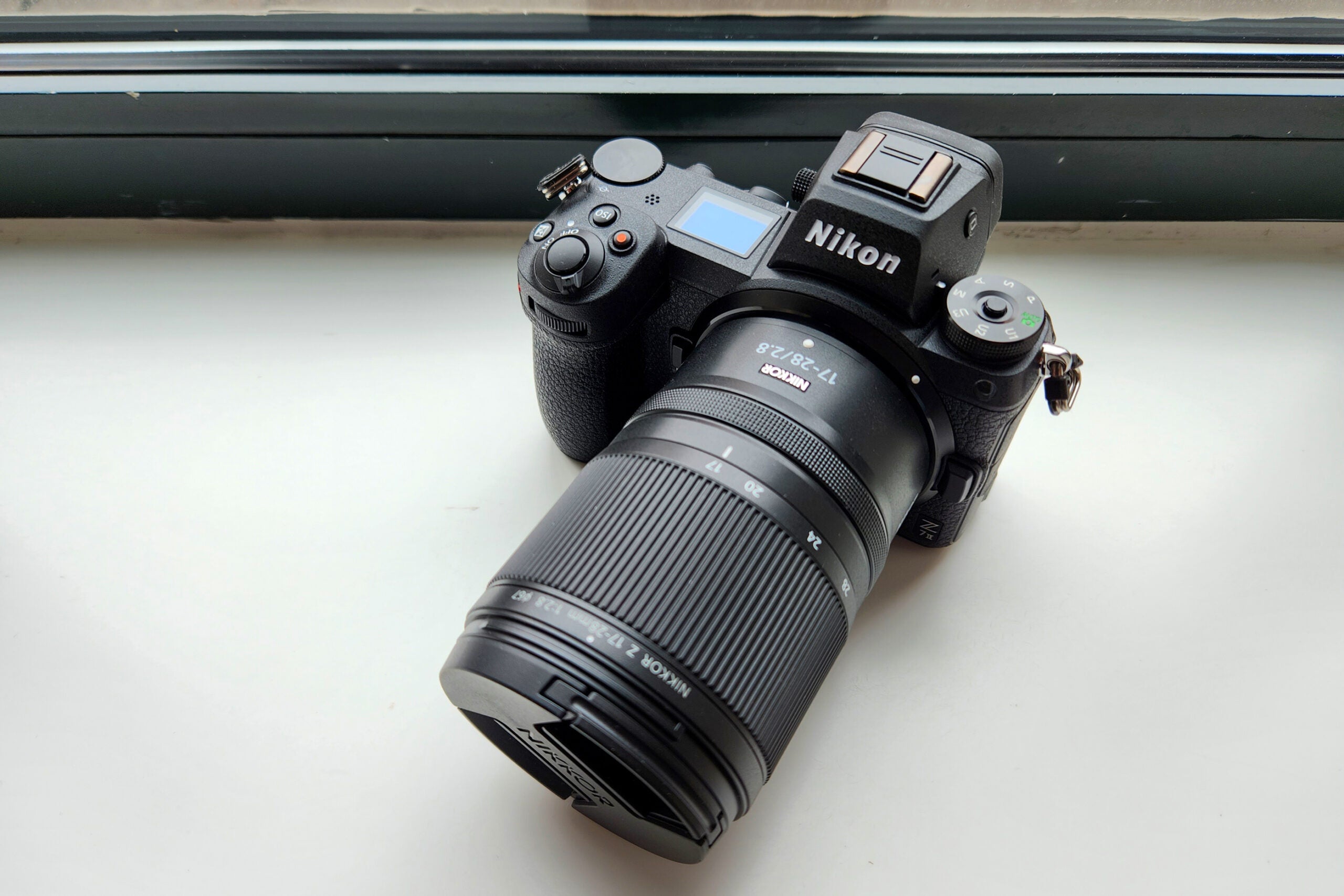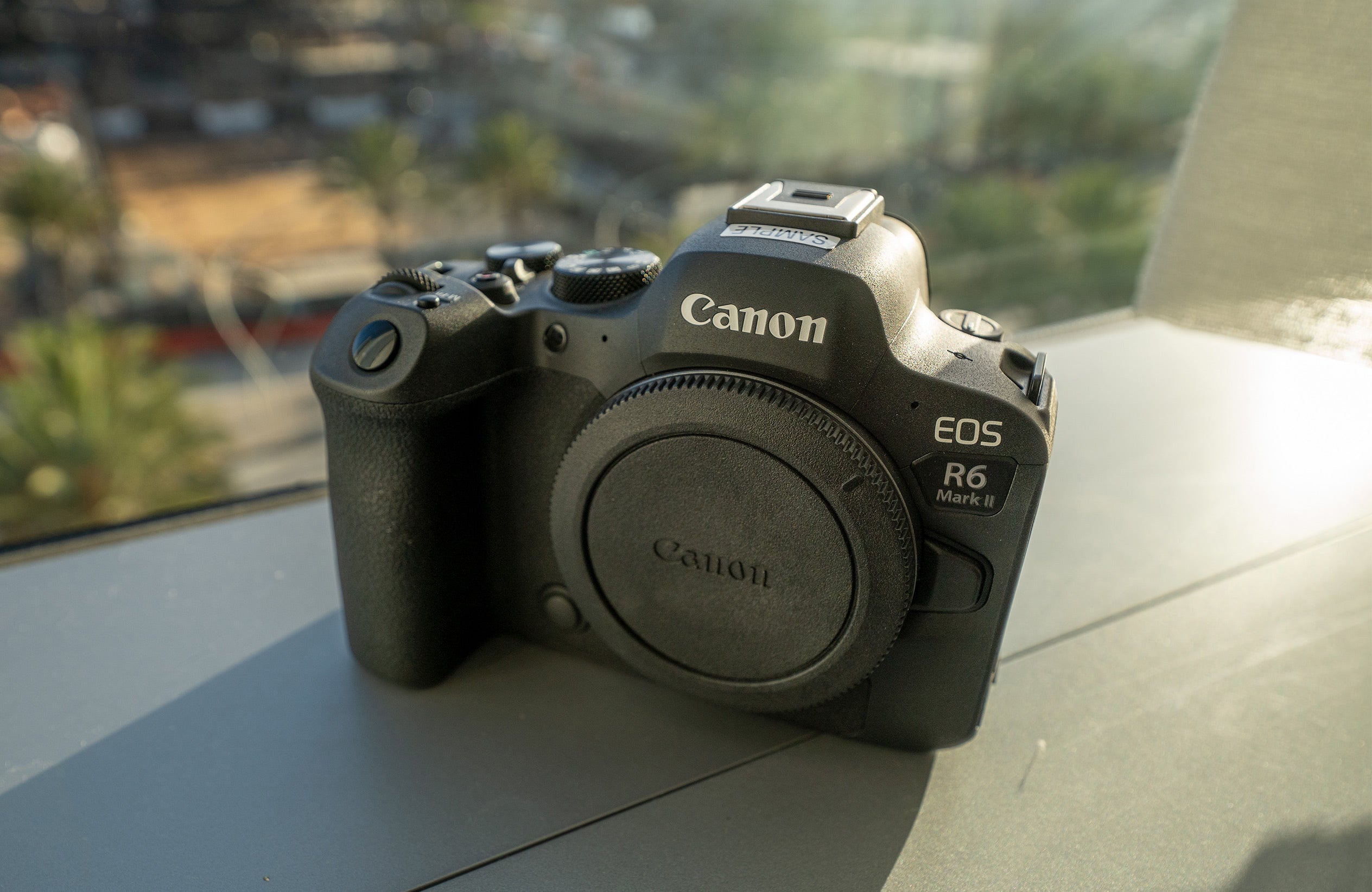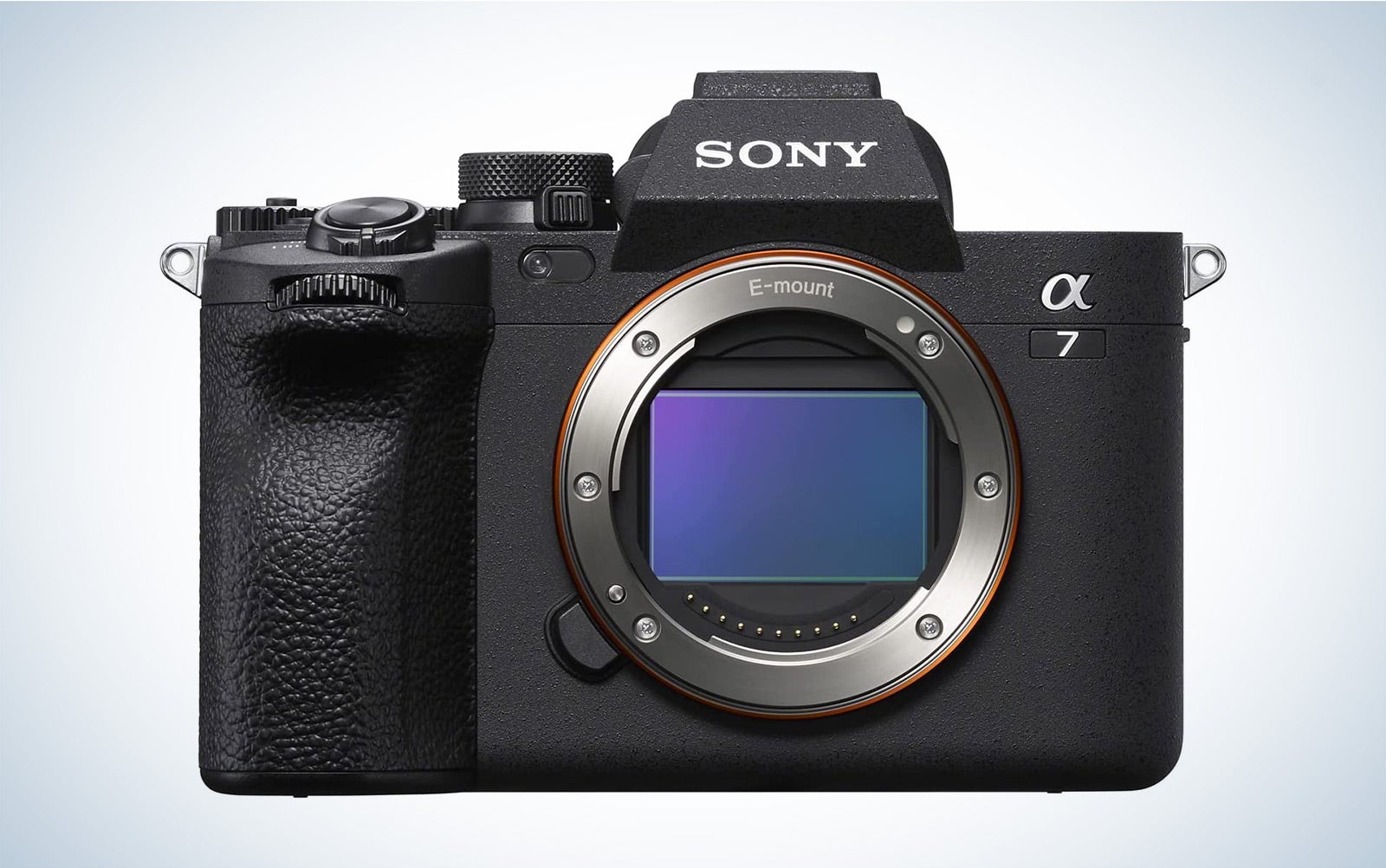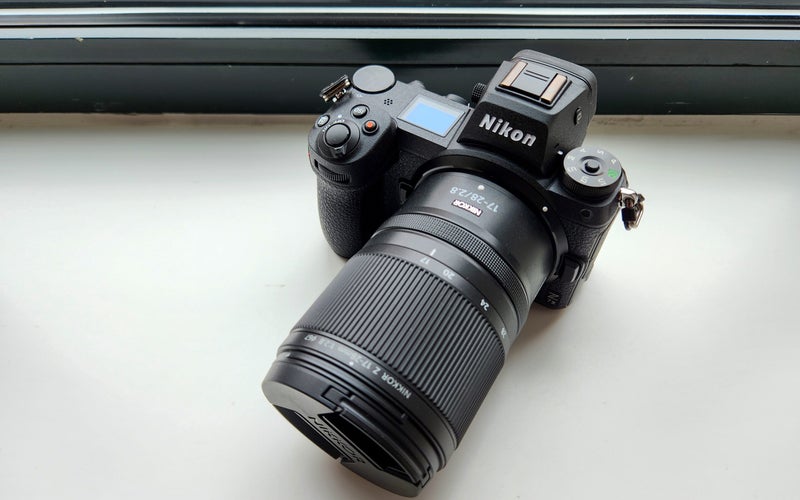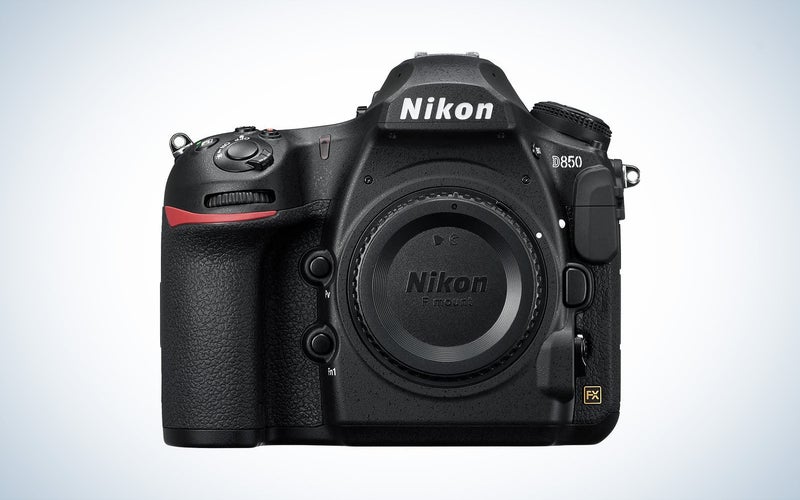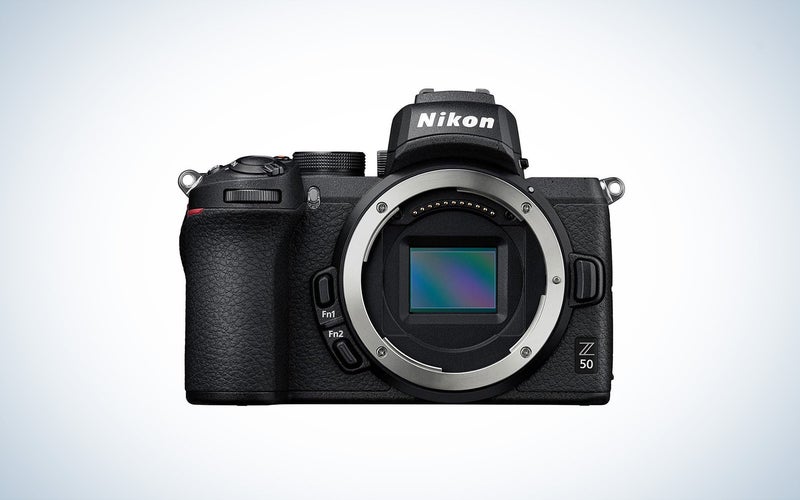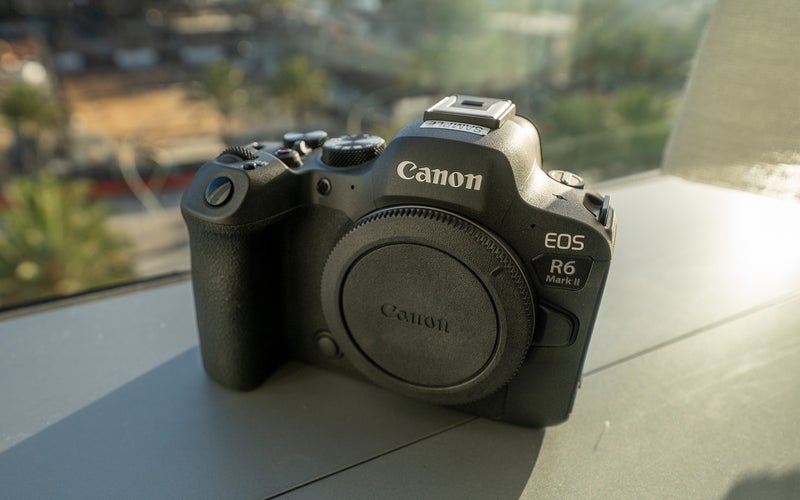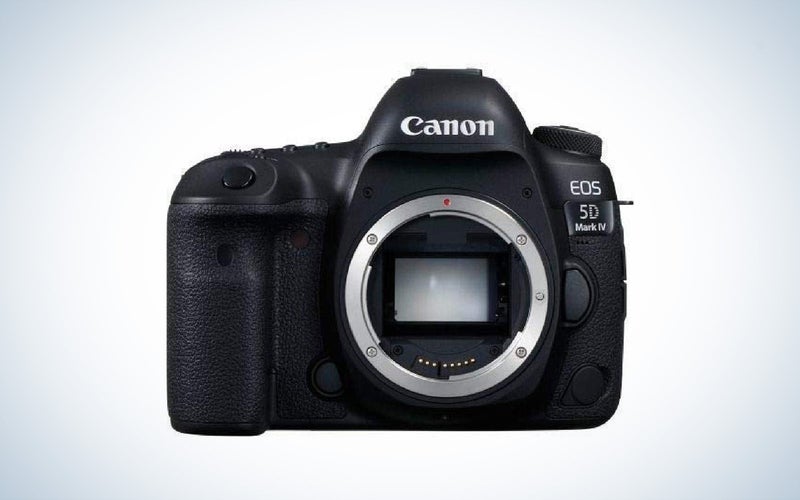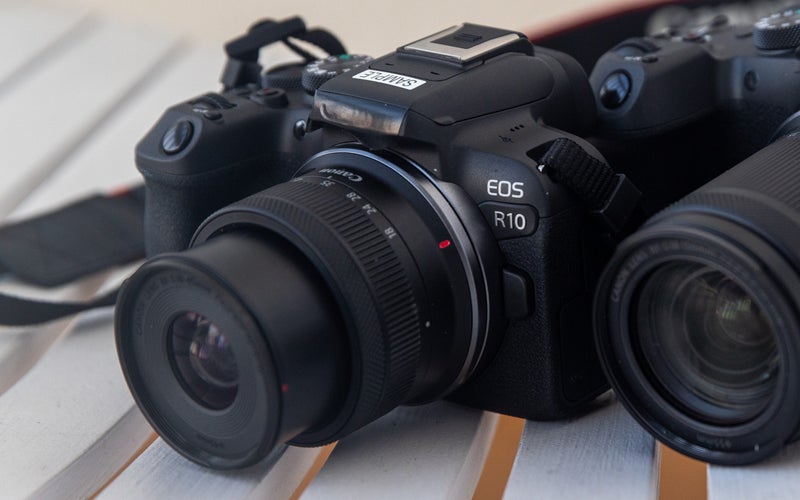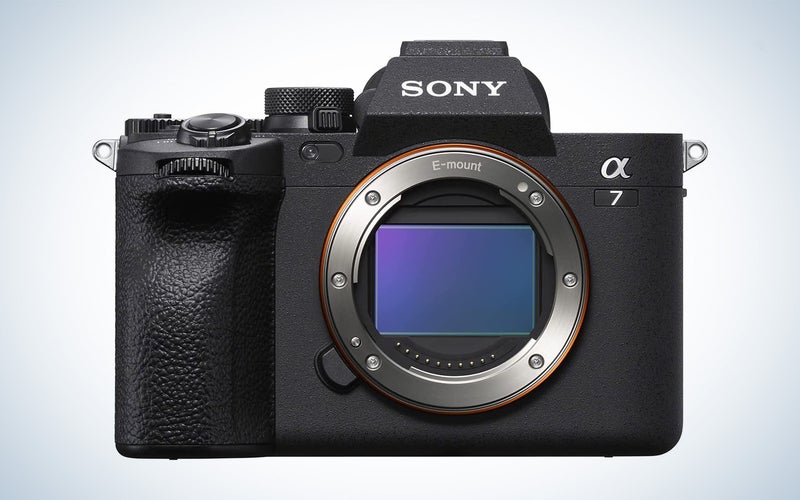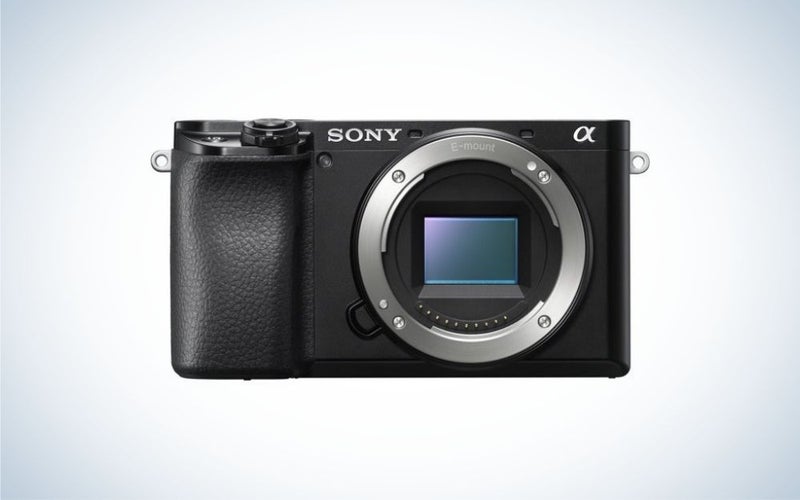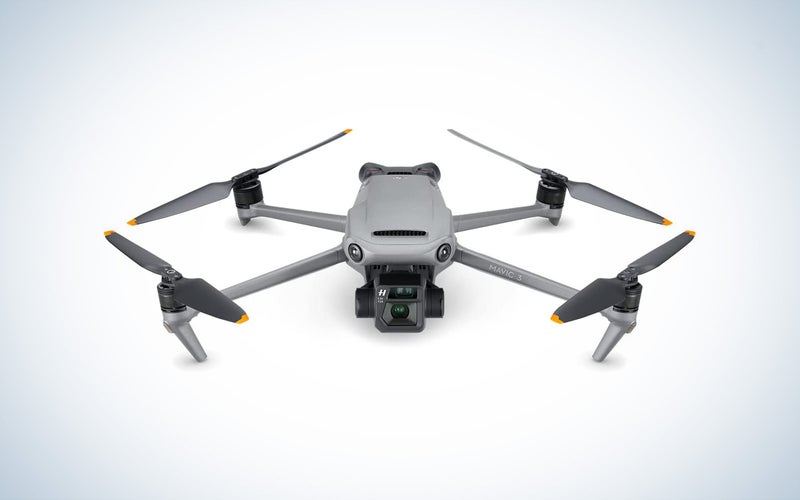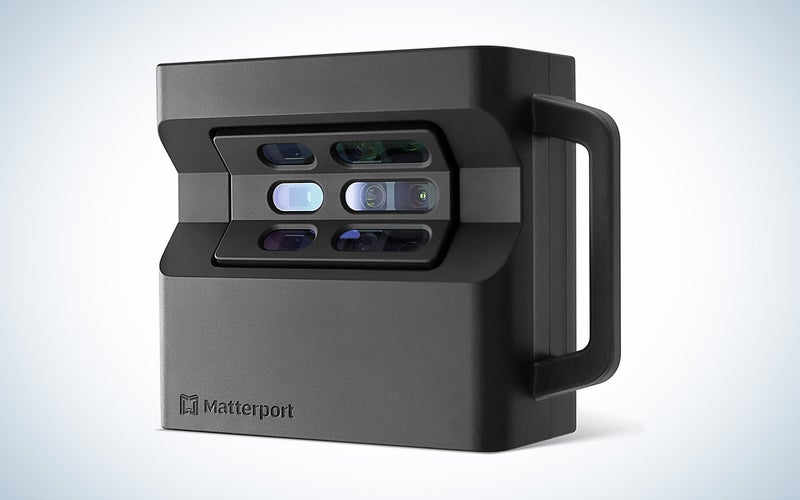We may earn revenue from the products available on this page and participate in affiliate programs. Learn more ›
A good camera for real estate photography can help you show a home or space to its full potential, enticing potential buyers. Photography has long held the power to make or break real estate listings, but that has never been more true than now. Many buyers rely on listing photographs to help make a decision, so it’s crucial to have a camera that can produce quality images. Having the best camera for real estate photography can also help ensure you keep getting those photography jobs as you deliver consistent quality to agents with increasingly deep photographic talent pools from which they can pull.
- Best Nikon mirrorless: Nikon Z7 II
- Best Nikon DLSR: Nikon D850
- Best Nikon on a budget: Nikon Z50
- Best Canon mirrorless: Canon EOS R6 Mark II
- Best Canon DSLR: Canon 5D Mark IV
- Best Canon on a budget: Canon EOS R10
- Best Sony: Sony a7 IV
- Best Sony on a budget: Sony a6100
- Best for aerials: DJI Mavic 3
- Best for 3D walkthroughs: Matterport Pro2 3D MC250
How we picked the best cameras for real estate photography
I have been shooting various forms of real estate for the past ten years. During that time, I established and built a photography program at a major vacation rental company, defining gear requirements and best practices for photographers. I used this knowledge and experience to pick the best cameras for real estate photography.
For these selections, I considered various models from the top manufacturers and highlighted mirrorless, DLSR, and budget options. With the rise of video and walkthrough needs for real estate, I also included a drone and 3D camera to fit the needs of a wide range of photographers. Bracketing capabilities, image and video quality, dynamic range, and price were all factored into the decision to ensure quality content for documenting real estate.
The best cameras for real estate photography: Reviews & recommendations
Best Nikon mirrorless: Nikon Z7 II
Abby Ferguson
Why it made the cut: The Nikon Z7 II’s numerous bracketing settings, excellent image and video quality, and good low-light performance make it an ideal choice for real estate photography.
Specs
- Sensor: 45.7 Megapixel full-frame
- Bracketing: Up to 9 frames, 1/3, 2/3, 1, 2, and 3 EV
- Video quality: UHD 4K 60p
- Weight: 1.4 pounds (body only)
Pros
- Excellent image quality
- Versatile bracketing settings
- 4K video
- Good build quality
Cons
- Battery life could be better
Buy it used or refurbished: Amazon | eBay
The Nikon Z7 II is a fantastic all-arounder, and real estate photography is no exception. As with other Nikon cameras, it offers robust bracketing options. It can bracket from zero to nine frames, with increment options of 0.3 (1/3), 0.7 (2/3), 1, 2, and 3 EV (though some of these aren’t options when bracketing seven or nine frames). Such a wide range of settings gives you plenty of flexibility to ensure you get the exposures you need. And it has a low base ISO of 64, which is ideal for bright exteriors.
The Z7 II’s 45.7-megapixel full-frame sensor produces richly detailed photos. Of course, that results in really large files, especially if you are photographing in raw. That could get cumbersome for large properties where you may end up with 500 or more files. If that’s a deal breaker for you, the Z6 II is your best option, and it will even save you some money.
In addition, to quality stills, the Z7 II is capable of 4K60p video, which will come in handy for your walkthrough videos. Another nice feature is the ability to decide what settings to carry over from stills to video. If, for example, you set a custom white balance for photos, you can easily carry that over to the walkthrough video as well, saving you some time.
Best Nikon DLSR: Nikon D850
Nikon
Why it made the cut: Though DSLRs are starting to get a bit dated, Nikon’s D850 is a powerful DSLR with excellent image quality and a battery life of up to 1,840 shots. Plus, the low ISO 64 makes it possible to get quality exterior shots even on the brightest days.
Specs
- Sensor: 45.7 Megapixel full-frame
- Bracketing: Up to 9 frames at 1/3, 2/3, 1, 2, and 3 EV
- Video quality: UHD 4K
- Weight: 2.01 pounds
Pros
- Rugged, weather sealed body
- Great battery life
- Incredibly detailed images
- Excellent low and high ISO performance
Cons
- Visible rolling shutter in 4K video
Buy it used or refurbished: Amazon | eBay
Nikon’s D850 is a powerhouse of a DSLR suitable for most photographic pursuits, even if it’s getting a bit long in the tooth. As with other Nikon cameras, the bracketing capabilities are extensive so that you can choose what best suits your needs. Its large 45-megapixel sensor will produce large files to contend with, but the quality and detail in those images will be exceptional.
The 4K full-frame video will allow you to get high-quality walkthrough videos that will wow your clients and entice buyers. And the impressive battery life means you can shoot for longer than comparable mirrorless cameras. The camera body offers a rugged build, so if you happen to get caught in the rain while shooting exteriors, you won’t have to panic. Another bonus: The low ISO 64 setting allows you to easily capture quality exterior images on bright days without maxing out your shutter while bracketing.
Best Nikon on a budget: Nikon Z50
Nikon
Why it made the cut: A mid-priced mirrorless, the Nikon Z50 is a lightweight camera with excellent bracketing options, solid dynamic range, and a compact size.
Specs
- Sensor: 20.9 Megapixel APS-C
- Bracketing: Up to 9 frames at 1/3, 2/3, 1, 2, and 3 EV
- Video quality: UHD 4K 30p
- Weight: 13.93 ounces (body only)
Pros
- Versatile bracketing capabilities
- 4K video
- Lightweight and compact
- Excellent dynamic range
Cons
- Crop factor limits wide-angle lens options
Buy it used or refurbished: Amazon | eBay
Nikon’s Z50 is an impressive mid-level mirrorless option. It comes with Nikon’s wide array of bracketing options and is also capable of 4K video. Though real estate photography typically relies on a tripod, the lightweight body of the Z50 makes it easier to carry from room to room or bring to destination shoots.
The APS-C sensor does mean that you have to consider crop factor when choosing a lens for real estate photography, and the lens selection for this camera is limited. As a result, you may need to go with a DSLR lens and an adapter, though you can potentially get a cheaper lens because of this, saving you even more money. The body itself is really reasonably priced for what you get, so this is a good option for someone just starting out in real estate photography.
Best Canon mirrorless: Canon EOS R6 Mark II
Abby Ferguson
Why it made the cut: The Canon EOS R6 II is a full-frame camera capable of 4K video, a quality 24.2MP sensor, and excellent JPG colors.
Specs
- Sensor: 24.2 Megapixel full-frame
- Bracketing: Up to 7 frames at up to 3 EV
- Video quality: UHD 4K 60p
- Weight: 1.3 pounds (body with battery and memory)
Pros
- Great image quality
- WiFi and Bluetooth connectivity
- Excellent dynamic range
- Plenty of video features
Cons
- Clunky AEB setup
Buy it used or refurbished: eBay
The EOS R6 II is a true hybrid camera with a good balance of stills and video features. It only has a 24.2-megapixel sensor, but it produces crisp images without massive file sizes, so you can bracket away without bogging things down. And, if you prefer to shoot JPG for your real estate shoots, the colors and dynamic range of JPGs from this camera are excellent.
The EOS R6 II is capable of excellent 4K video using the full width of the sensor, which is ideal when you need wide-angle shots. One of the downsides of this camera for real estate photography is the bracketing setup process. It requires going into multiple menus with quite a few steps. But you can set up a shortcut if you have buttons free, which will help save some time.
Best Canon DSLR: Canon 5D Mark IV
Canon
Why it made the cut: The Canon 5D Mark IV is a rugged full-frame DSLR with HDR video capabilities, pleasing JPG colors, and compatibility with a wide selection of lenses appropriate for real estate.
Specs
- Sensor: 30.4 Megapixel full-frame
- Bracketing: Up to 7 frames at up to 3 EV
- Video quality: DCI 4K 30/24p
- Weight: 1.76 pounds (body only)
Pros
- Excellent high ISO quality
- Good weathersealing
- Pleasing JPG colors
- Good dynamic range
Cons
- A bit pricey
- 1.64x crop on 4K video
Buy it used or refurbished: Amazon | Canon | eBay
Though DSLRs are beginning to fade, Canon’s 5D Mark IV is a robust DSLR offering that is still an excellent choice. It has a solid, rugged build with excellent weather sealing to withstand abuse. It can shoot 4K video, though it does so at a 1.64x crop. It’s also capable of shooting HDR video. When combined with Canon’s “Auto Lighting Optimizer” mode, you can get a better balance between highlights and shadows, which is a useful feature when shooting interior walkthrough footage.
The 5D Mark IV has great low-light performance, which makes it easier to document dark basements or dimly lit bathrooms without adding light with a flash setup. As with other Canons, the bracketing setup is a bit of a pain, but it has plenty of options once you go through the multiple menus.
Best Canon on a budget: Canon EOS R10
Stan Horaczek
Why it made the cut: The EOS R10 is a very capable APS-C mirrorless camera with a 24.2MP sensor, uncropped 4K video, and overall excellent image quality.
Specs
- Sensor: 24.2 Megapixel APS-C
- Bracketing: Up to 7 frames at up to 3 EV
- Video quality: UHD 4K 60p
- Weight: 13.5 ounces (body only)
Pros
- Excellent autofocus
- Uncropped 4K video at 30p
- Great raw and JPG quality
- WiFi and Bluetooth
Cons
- Battery life could be better
- Crop factor limits wide-angle lens options
Buy it used or refurbished: Canon | eBay
Canon’s EOS R10 is an excellent choice for those just getting started with real estate photography and looking for an APS-C mirrorless camera. Canon developed a new sensor just for this camera, resulting in great image quality. Both raw files and JPGs are high-quality, with impressive dynamic range. And as with other Canon cameras, JPG files have excellent colors for easier post-processing.
Beyond stills, the R10 is capable of 4K video, albeit with a crop and less sharpness than the competition at 60p. The footage is much sharper at 30p, which is downsampled. And HDR-PQ recording is possible, which is ideal for real estate usage. It lacks stabilization, though, so you’ll want to use a gimbal for your walkthrough videos.
Best Sony mirrorless: Sony a7 IV
Sony
Why it made the cut: The new iteration of Sony’s a7 line is a seriously impressive camera with stunning image and video quality, plenty of bracketing settings, and battery life long enough to last for most real estate shoots.
Specs
- Sensor: 33 Megapixel full-frame
- Bracketing: Up to 9 frames and up to 3 EV
- Video quality: UHD 4K 30p
- Weight: 1.4 pounds (body with battery and memory)
Pros
- Exceptional video quality
- Highly detailed images
- Versatile bracketing options
- In-body stabilization
Cons
- Pricey
Buy it used or refurbished: eBay
The Sony a7 IV is an excellent, well-rounded hybrid camera ideal for most types of shooting, including real estate photography. It has excellent low-light performance, so you won’t have to worry when you need to bump your ISO for dark spaces. It can bracket 3, 5, or 9 images with an EV of 0.3, 0.5, 0.7, 1, 2, or 3. The EV is limited depending on how many frames you want, however. For example, at nine frames, the max EV is 1, but it still provides plenty of bracketing options.
The video from the a7 IV is stunning, allowing you to produce top-tier walkthrough videos. It’s capable of 4K 60p Video in 10-Bit and has 7K oversampling for excellent sharpness and detail, which is ideal when showing off the attributes of a property. There’s also no recording time limit, so you can even shoot an entire property in one take if you want. The color science is also improved, so raw and JPG files will have more accurate colors, making them faster and easier to edit.
Best Sony on a budget: Sony a6100
Walmart
Why it made the cut: As an entry-level camera, the Sony a6100 is very reasonably priced but still has the bracketing capabilities and quality video features needed for real estate.
Specs
- Sensor: 24.2 Megapixel APS-C
- Bracketing: Up to 9 frames and up to 3 EV
- Video quality: UHD 4K30p and Full HD 120p
- Weight: 13.92 ounces (body with battery and memory)
Pros
- Affordable
- Lightweight and compact
- 4K video
- Good selection of bracketing settings
Cons
- Crop factor limits wide-angle lens options
Buy it used or refurbished: Amazon | eBay
The Sony a6100 is an entry-level APS-C camera, making it an affordable option for those just getting started. It is extremely lightweight and compact, which is ideal for a traveling real estate photographer or someone who shoots a variety of subject matters. Despite the low price, it is still capable of UHD 4K30p video for quality walkthrough videos. Unfortunately, it doesn’t have any in-camera stabilization, so you will want to invest in a gimble for smooth footage.
The image quality for both raw and JPG files is excellent, with good detail. The viewfinder is off to the side, range-finder style, which some may not like, but using the LCD screen is generally easier for real estate anyway. The battery life is also robust for a camera for this price, though you may want to have a spare on hand if you are doing both photos and videos.
Best for aerials: DJI Mavic 3
DJI
Why it made the cut: The DJI Mavic 3 is a powerful drone with exceptional 5.1K video and two separate cameras—a 20-megapixel wide-angle with a 4/3-inch sensor and a 12-megapixel telephoto with a 1/2-inch sensor—for different types of shots.
Specs
- Sensor: 20-megapixel wide-angle with 4/3-inch sensor, 12-megapixel telephoto with 1/2-inch sensor
- Bracketing: 3 or 5 frames
- Video quality: 5.1K50p or UHD 4K120p
- Weight: 1.97 pounds
Pros
- Stable flight even with some wind
- Easy to fly
- Superb image and video quality
- HDR compatibility
Cons
- Pricey
Buy it used or refurbished: eBay
Aerial photos and videos are becoming increasingly popular for real estate, especially for higher-end properties. The DJI Mavic 3 is the ideal drone choice for providing your clients with quality footage. It is stable in the air, even with some wind and at higher altitudes. If you photograph mountain properties, this will help you immensely. It also has four-directional obstacle sensing if you are contending with trees and powerlines.
The Mavic 3 offers stunning 5.1K video with an excellent three-axis gimble for smooth footage. It can also shoot raw stills for more control over your editing. And it features both a wide-angle and telephoto lens so that you can get a range of shots. As a bonus, you can also bracket with the Mavic 3 with either three or five brackets. This allows you to create HDR files from your drone to blend better with images from your camera if you use HDR for those.
Best for 3D walkthroughs: Matterport Pro2 3D MC250
Matterport
Why it made the cut: The Matterport Pro2 3D MC250 is the premier option for professional-quality 3D walkthroughs.
Specs
- Sensor: Structured light (infrared) 3D sensor
- Output pano pixels: 134.2 megapixels
- Bracketing: N/A
- Video quality: N/A
- Weight: 7.5 pounds
Pros
- Powerful 3D sensor
- User-friendly app control
- Creates immersive 3D tours
- Easy to use
Cons
- Subscription required
- Expensive
Buy it used or refurbished: eBay
Matterport has long been the industry leader in 3D walkthrough cameras. The Pro2 is its top-tier option for excellent quality and a full feature set. For example, you can create 3D scans and dollhouse views, accurately measure things within the 3D model, blur faces, leave notes and comments within the walkthrough, and more.
The images this camera puts out are impressive. It can produce 134-megapixel equirectangular panoramic images, and you can export 2D images up to 8092 x 4552 pixels. You can easily download and edit the high-resolution assets as well, including 3D mesh files (.OBJ) for planning purposes. In addition, the battery life of the Pro2 is excellent—up to eight hours—so you can scan multiple properties in one day without running out of power.
This is a pricey camera for real estate photography, and you’ll need a subscription to access the full range of features. But if you are serious about 3D walkthroughs and creating floorplans, this is your best bet. If you are looking for a more affordable, approachable way to do walkthroughs, Matterport also makes the Axis, which is a motorized rotating cellphone mount. You can also use an Insta360 or Ricoh 360 camera as a step in between using your phone and the expensive Pro2.
Things to consider before buying a camera for real estate photography
Having the right gear for real estate photography is critical for two reasons: It can stop a potential buyer from scrolling on and encourage them to look deeper, and it can even entice them to make an offer based on photos alone. Opendoor found that seven out of 10 buyers scroll through listings a few times a week. And according to LendingTree, 43 percent of buyers made an offer on a home before touring it in the past two years, which is higher than ever before. Quality photos can stand out in a crowded field to draw attention to a listing, to begin with, and potentially even sell it on the spot. Here are some key things to consider when shopping for a new real estate photography camera.
Camera system
Buying an interchangeable-lens camera requires commitment. The body you choose will determine what lenses and other accessories you will buy down the road. Most major camera brands make excellent models for real estate photography, so it’s a matter of choosing one that makes sense for you. For example, consider how a camera feels in your hand and how you like the flow of menu systems. Of course, part of the decision comes down to the availability of compatible lenses that work for real estate since a camera body is nothing without the right lens.
Generally speaking, switching doesn’t make much sense if you already have a suite of gear based on one camera system. You’re likely to lose money if you sell everything off to buy all new equipment due to simple depreciation. Because of that, we’ve broken up this list into picks from different camera brands, helping you stick to a system you may already have.
Full-frame versus cropped sensor
Once you decide on a camera brand, choosing a full-frame or cropped sensor will be the next step in deciding on a camera for real estate photography. Of course, both formats have pros and cons. In general, a full-frame sensor will provide the most flexibility and the best overall performance for real estate photography. And a full-frame camera is a must for those with more experience and taking on higher-end jobs. The primary reason a full-frame camera is a must for most real estate applications is that it will open up more focal lengths for you. There is no crop factor with full-frame, which makes wide-angle photography more accessible. That’s crucial for both shooting in small rooms and showcasing expansive spaces.
Beyond lens choices, full-frame cameras also typically offer more megapixels, which is useful for high-resolution applications like posters or large ads. You don’t need the highest megapixel count since most real estate photos are viewed on websites, but you want something reasonably high. And lastly, they tend to be better in low light conditions, which is helpful for some real estate situations—dimly light basements, for example.
A crop sensor may make more sense if you are new to the genre and photography as a whole. A crop sensor is ideal for beginners mainly because APS-C cameras and lenses will typically be much more affordable. Despite the lower prices, the quality of most crop sensors will be plenty for many jobs. The main downside to APS-C cameras is that you are limited on focal length due to the crop factor. You’ll have to go with an even wider lens than full-frame options if you still want that wide field of view, which limits your choices.
Bracketing capabilities
For most styles of real estate photography, bracketing abilities will be essential. Bracketing is the act of taking multiple shots of the same scene, shifting the exposure for each image to capture detail in the shadows and highlights that might otherwise get lost. Bracketing allows you to stack images to create HDR files or selectively merge relevant exposures.
Some cameras are limited in the number of brackets they can take in Auto Exposure Bracketing mode (AEB) or the number of stops between brackets. While you can manually bracket, your process will be much more efficient—and less likely to have errors—using AEB mode, so finding a camera with flexible options for AEB will be helpful.
Video
One of the last considerations for a camera for real estate is video capabilities. With more and more people shopping for houses online, videos of properties have been growing in popularity. Some real estate agents have told me that the ability to shoot video is a requirement for them when they are hiring photographers. Thus, finding a camera with quality video options will be important if you want to offer that.
FAQs
Q: What kind of lens do realtors use?
Realtors and real estate photographers typically use wide-angle lenses for real estate photography. Wide-angle lenses allow for more of a room to be shown in a single image so that potential buyers can get a better sense of the space and layout.
Q: Is a 24mm lens good for real estate photography?
A 24mm lens is a good lens for real estate photography. It’s wide enough to show a broad view, though not so wide you have intense distortion. However, some situations—such as particular clients, expansive rooms, or small homes—may require you to have something even wider.
Q: How wide is too wide for real estate photography?
On a full-frame camera, anything wider than 12mm is too wide for real estate photography, as the lens will introduce too much distortion. This absolutely includes fisheye lenses, which are a no-no for real estate.
Q: Are video-capturing features important for real estate?
Video features are becoming more and more critical for real estate. I have spoken with some agents that have informed me they will not hire photographers who can’t do video walkthroughs, so having a camera with quality video specs will ensure you can provide what clients may need.
Final thoughts on choosing the best camera for real estate photography
The best camera for real estate photography will largely depend on your particular needs and your preferred camera system. All of the major camera manufacturers make cameras that will be excellent choices. By paying attention to low-light capabilities, bracketing options, and image and video quality, you can be sure that you will get a camera to produce quality images for marketing homes.
